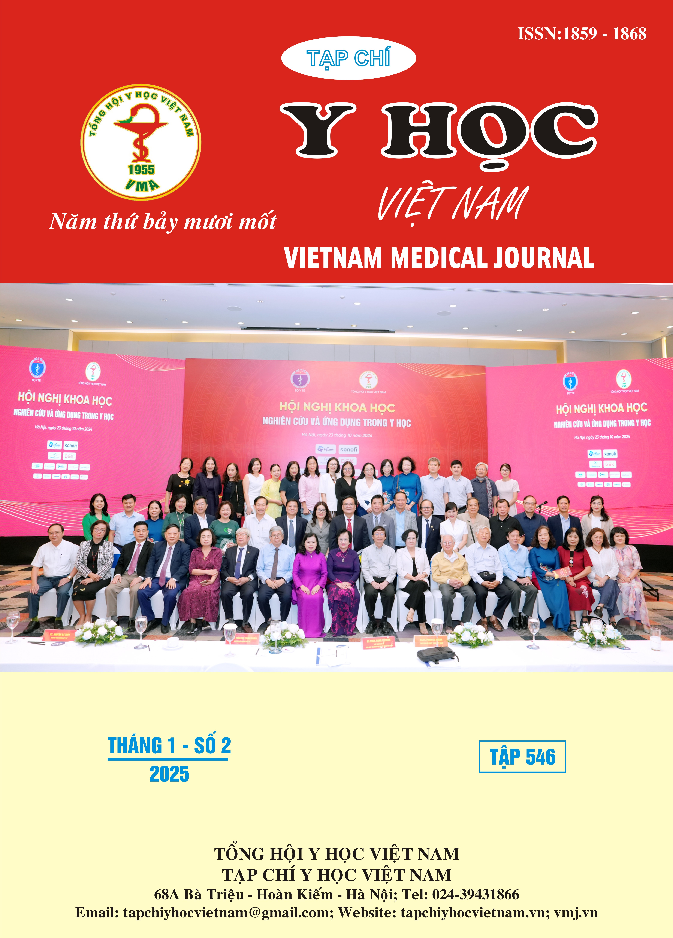RESULTS OF ABBREVIATED MAGNETIC RESONANCE IMAGING (AMRI) COMPARED WITH MAGNETIC RESONANCE IMAGING (MRI) ON 92 LESIONS WITH SUSPICIOUS BREAST CANCER AT K HOSPITAL
Main Article Content
Abstract
Objective: To evaluate the role of the 1.5 Tesla Abbreviated Magnetic Resonance Imaging (AMRI) in the diagnosis the lessions of breast cancer. Subjects and methods: The retrospective study was conducted at K Hospital from June 2020 to June 2022, on 92 lessions with suspicious breast cancer, undergoing 1.5 Tesla MRI with 02 protocols: full and abbreviated protocol (integrated), with histopathological results after needle biopsy and/or surgery. The abbreviated protocol performed in the study included axial STIR and axial T1FS sequences before injection, 1 minute, and 2 minutes after injection. MRI images were classified into 2 groups: full and abbreviated protocol, encrypted and blinded patient information. Results were independently evaluated by two experienced radiologists. The imaging, pathologic features, and value of the two methods were analyzed. Results: With 92 suspicious lesions of the breast cancer were detected in 82 patients , of which 51 cases were cancer and 41 cases were benign lesions. The lesion detection rate of the abbreviated MRI(AB-MRI) compared with full diagnostic MRI(FD-MRI) was 97.8%. There are Two cases were not observed on AMRI, accounting for 2.2%, classified as BI-RADS 3 on MRI, and were benign lesions. On the other hand, comparing the ability to classify breast lesions according to BI-RADS on the MRI with MRI, the agreement was very good (Cohen’s Kappa index=0.866). The accuracy, sensitivity, and specificity of AMRI (BIRADS≥4) in the diagnosis of breast cancer were 81.5%, 100%, and 55.8%, respectively. Conclusion: Abbreviated MRI is a precious method in the diagnosis of breast cancer, with sensitivity and accuracy equivalent to full diagnostic MRI.
Article Details
Keywords
Abbreviated Magnetic resonance imaging, Magnetic resonance imaging, breast cancer.
References
2. Mainiero MB, Moy L, Baron P, et al (2017). ACR Appropriateness Criteria((R)) Breast Cancer Screening. J Am Coll Radiol, 14(11S):S383-S390.
3. Mann RM, van Zelst JCM, Vreemann S, Mus RDM (2019). Is Ultrafast or Abbreviated Breast MRI Ready for Prime Time? Current Breast Cancer Reports, 11(1):9-16.
4. Moschetta M, Telegrafo M, Rella L, Stabile Ianora AA, Angelelli G (2016). Abbreviated Combined MR Protocol: A New Faster Strategy for Characterizing Breast Lesions. Clin Breast Cancer, 16(3):207-11.
5. Kuhl CK, Schrading S, Strobel K, Schild HH, Hilgers RD, Bieling HB (2014). Abbreviated breast magnetic resonance imaging (MRI): first postcontrast subtracted images and maximum-intensity projection-a novel approach to breast cancer screening with MRI. J Clin Oncol, 32(22):2304-10.
6. Lee-Felker S, Joines M, Storer L, et al (2019). Abbreviated Breast MRI for Estimating Extent of Disease in Newly Diagnosed Breast Cancer. Journal of Breast Imaging, 2(1):43-49.
7. Mann RM, Cho N, Moy L (2019). Breast MRI: State of the Art. Radiology, 292(3):520-536.


